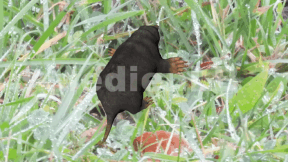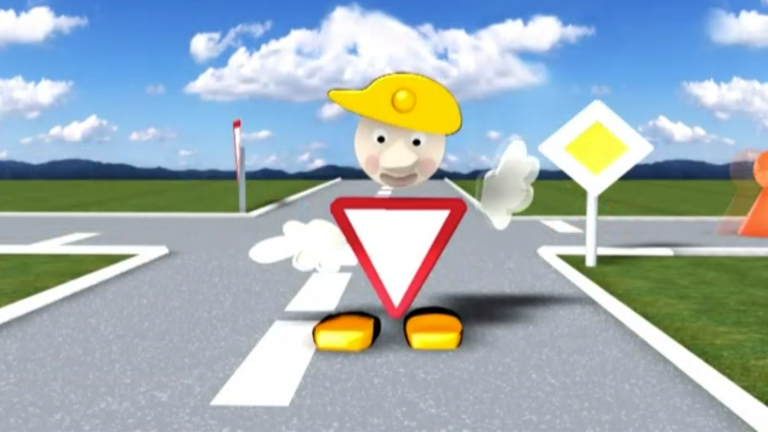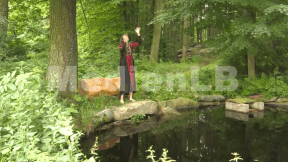Suche:
- # Artistry
- # Biology
- # Chemistry
- # Ecological
- # Economy
- # English
- # Foreign Language
- # Geography
- # German
- # Health
- # History
- # Informatik
- # Latin
- # Mathematics
- # Media Education
- # Music
- # Physics
- # Politics / Civics
- # Preschool
- # Primary School
- # Religion
- # Society
- # Sports
- # Technology
- # Training of Teachers
- # Vocational Education
Dornröschen
Die Geschichte von Dornröschen ist eines der bekanntesten Märchen. Es gehört zu den „Kinder- und Hausmärchen“ der Brüder Grimm. Der Film zeigt in liebevoller Darstellung vor prächtiger Kulisse das Märchen vom Königspaar, welches endlich ein Kind bekommt. Durch einen Fluch wird das Mädchen 100 Jahre Schlafen, nachdem sie sich im fünfzehnten Lebensjahr an einer Spindel sticht. Durch den Kuss eines Prinzen wacht sie nach dieser Zeit wieder auf und die beiden feiern Hochzeit.
Learn moreSummer
Finally, summer has come! This DVD explains in a way suitable for children why summer comes, how life develops in nature and why we humans love this season so much. In short chapters, children learn why daylight hours are longer and how a thunderstorm builds up. The behaviour of animals and their young as well as changes in the flora are explained in a way appropriate for children. Rules for the right behaviour in the sun, in the water and during a thunderstorm are explained just like the dangers of a tick bite or wasp sting and the right reaction in such a situation. Besides didactic-methodical suggestions, the accompanying material also includes various games, songs, experiments, tips and suggestions providing an incentive to work on a topic, which is virtually a compulsory annual subject, from different points of view and holistically and to discover it from a new angle.
Learn moreWine-Growing
The film starts with a short, simple overview of the importance of viticulture in Germany and Austria and the most famous wine regions in both countries. Then it goes on to discuss the most important conditions (soil, solar radiation) and forms of cultivation (terraces and vineyards on the plains) as well as the most widely spread types of grapes in Germany and Austria. In the main part of the film, pupils of a primary school accompany a wine-grower throughout the working year, watching him at work in the vineyard: form of the vine, work in winter (pruning, fruitbearing vines, substitute vines) turning cut-off vines into chaff, additional jobs (hammering in sticks, tightening wires, fastening fruit-bearing vines), removal of the earth from the grafting spots, pest control, cultivation of green manure crops, removal of surplus shoots, blossoming, weed removal, fighting nematodes (threadworms) biologically by cultivating daikon radish and, finally, harvesting. Apart from the manual harvest – where young and old people join in – also the use of harvesters is described.
Learn moreHaushaltswissen
Ordnung spart viel Zeit. Hauswirtschaftslehrerin Petra Fuchs gibt sieben hilfreiche Tipps, wie Aufräumen schnell geht und Spaß bringen kann. Dazu kommt das Themenfeld Sicherheit im Haushalt – hier wird auf die wichtigsten Sicherheitsregeln eingegangen, damit Dir beim Schneiden mit dem Messer oder beim Verwenden der Pfanne nichts passiert. Weiteres Haushaltswissen wird aus den Bereichen Reinigen mit verschiedenen Reinigungsmitteln, optimales Waschen mit der Waschmaschine und sicheres Kochen vermittelt. Zum Schluss zeigt der Film noch ein einfaches Rezept mit genauer Anleitung zum Nachkochen.
Learn moreChristmas
Christmas is a festival celebrated all over the world. Although it is a Christian feast, many people on Earth know and celebrate Christmas. Christmas time is a very special period that somehow casts a spell on the world around us. Streets and houses are decorated and music can be heard from all sides. Although the grown-ups are "under stress", so to speak, in December, it is nevertheless a cosy and pleasant time.
Learn moreContinents
Continents are continuous expanses of land that are clearly separated from each other by oceans.
Learn moreMaulwurf
Jedes Kind hat schon einmal von ihm gehört, gesehen haben ihn die Wenigsten, denn er lebt meistens im Verborgenen.
Learn moreRoad Safety Education
Road safety education for children is a difficult task for parents, tutors and teachers. Correct behaviour in road traffic is extremely hard to learn for children. They are not aware of the dangers. But how can you raise their awareness without frightening them? How can you encourage their autonomy in road traffic without exposing the children to dangers? The give-way sign “Signo” guides the children through traffic. It describes the correct crossing of a street and shows the dangers of playing next to a street and the right behaviour for passengers in a car. The film also describes the right clothes in the dark, the safe bike and the most important traffic rules. “Signo” asks well-directed questions to actively include the children in what is happening. The accompanying material contains ideas for practical implementation, games, songs, active games and painting sheets on the subjects. Work sheets for primary school are also included. Based on this comprehensive material, the DVD is ideal for projects in kindergartens, after-school care centres and primary schools.
Learn moreIntolerances
We humans are so-called “omnivores“, that means we eat everything. We are not restricted in our diet. We tolerate meat, fish and vegetables, cereals and dairy products. Everything agrees with us.
Learn moreDer Froschkönig
Das Märchen vom Froschkönig ist eines der bekanntesten deutschen Märchen.
Learn moreWire
At first glance, wire seems to be a nondescript, rather boring material, too humdrum to be bothered with. The intensive occupation with wire in the film as well as in the accompanying material, however, makes obvious what significance wire actually has in our society. It is truly indispensable! Through the film, children get acquainted with the differences between modern and historic wire manufacturing. Moreover, they see how a bicycle is made and thus learn why bicycles are also called "wire donkeys".
Learn moreRecycling
The best waste is the one that never arises in the first place or that can be avoided.
Learn more



























